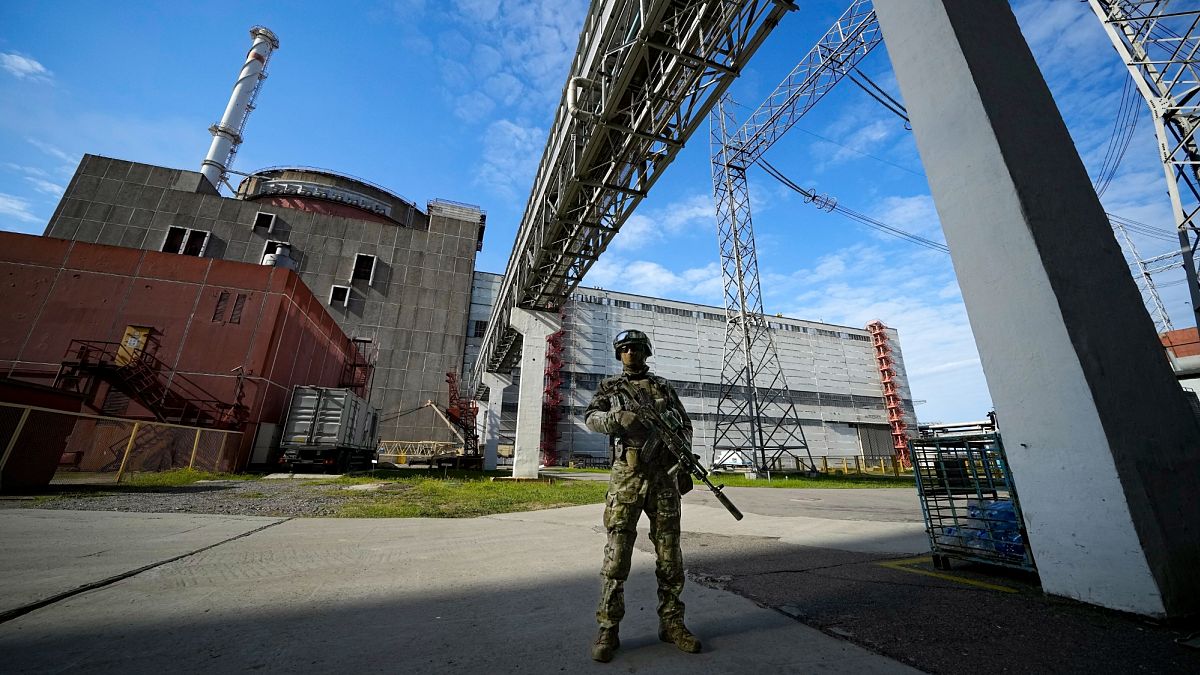Europe
IAEA chief says attacks around Zaporizhzhia NPP have increased

The Seizure of the Zaporizhzhia Nuclear Plant and Rising Safety Concerns
In 2022, Russian forces invaded Ukraine and took control of the Zaporizhzhia nuclear power plant, Europe’s largest nuclear facility. Since then, the plant has remained under Russian occupation, sparking global concerns about nuclear safety. The ongoing conflict in the region has led to heightened fears of a potential nuclear accident, as fighting near the plant intensified. Rafael Grossi, the head of the International Atomic Energy Agency (IAEA), recently expressed alarm over the increasing attacks around the plant. During a meeting with Alexei Likhachev, the chief of Russia’s state-owned nuclear energy corporation Rosatom, Grossi emphasized the unprecedented nature of the situation. He highlighted the risks of operating such a massive nuclear facility in the midst of an active combat zone, where military activity continues to escalate.
Grossi’s visit to Moscow was aimed at discussing the security of the Zaporizhzhia plant, which has been under Russian control since the early stages of the invasion. Despite efforts to ensure nuclear safety, the IAEA chief warned that the situation remains precarious, with no clear indication of which side is responsible for the strikes. Rosatom, on the other hand, accused Ukraine of constantly shelling the town of Energodar, the closest settlement to the plant. However, Grossi noted that determining the culprit behind the attacks is challenging, given the complexity of the conflict.
Escalating Risks at Other Nuclear Plants in the Region
The concerns about nuclear safety extend beyond Zaporizhzhia. Likhachev, the head of Rosatom, raised alarms about the increasing risks to nuclear security at the Kursk and Smolensk nuclear power plants in Russia. He cited incidents such as drone attacks, missile strikes, and damage to energy infrastructure as major threats. Likhachev specifically mentioned that Ukrainian forces had crossed into the Kursk region in August 2022, allegedly to disrupt Russian military operations. This incursion, along with other incidents, has heightened the risks of a nuclear accident at these facilities.
The situation at these plants is further complicated by the ongoing war in Ukraine. Grossi, during a visit to an electrical substation in the Kyiv region, warned that damage to key power grid facilities poses a significant threat to nuclear safety. He explained that disruptions to vital cooling systems at nuclear plants could have catastrophic consequences. This underscores the urgent need for international cooperation to mitigate these risks and ensure the safe operation of all nuclear facilities in the region.
International Support for Ukraine Amidst Uncertainty
As tensions around the Zaporizhzhia plant continue to rise, the international community is rallying to provide military and diplomatic support to Ukraine. The Ukraine Defence Contact Group, a coalition of around 50 countries, was established by former US Defence Secretary Lloyd Austin to coordinate weapons support for Ukraine after the Russian invasion. However, the future of this support is now uncertain, particularly as the leadership of the group transitions to a new host country for its meetings.
The 26th meeting of the contact group is set to take place at NATO’s headquarters in Brussels, convened by the UK. This marks the first time the meeting will be held under the auspices of a country other than the US, reflecting a shift in the international dynamics of the conflict. The change comes amid growing uncertainty about the level of support Ukraine can expect from the US, particularly with former President Donald Trump expressing skepticism about continued backing for Kyiv.
Donald Trump’s Role in Shaping the Conflict’s Future
Donald Trump, the former US President, has emerged as a key figure in the debate over Ukraine’s future. Trump recently criticized Ukrainian President Volodymyr Zelenskyy and expressed doubts about continuing US support for Ukraine. He claimed that his administration had already engaged in “very serious” discussions with Russia about ending the conflict. Trump also announced plans to meet with both Zelenskyy and Russian President Vladimir Putin, stating his desire to see the war come to an end.
Trump’s involvement in the conflict has sparked both hope and concern. On one hand, his stated intention to engage with both sides could potentially pave the way for diplomatic progress. On the other hand, his criticism of Ukraine’s leadership and his skepticism about ongoing support have raised fears that the US might reduce its role in assisting Kyiv. This uncertainty comes at a critical time, as Ukraine continues to rely heavily on international support to resist Russian aggression and protect its sovereignty.
The Broader Implications of the Conflict
The situation at the Zaporizhzhia nuclear plant and the broader conflict in Ukraine have far-reaching implications for global security and stability. The increased military activity around nuclear facilities raises the specter of a potential nuclear accident, which could have devastating consequences for the region and beyond. At the same time, the involvement of international actors like the IAEA, the Ukraine Defence Contact Group, and individual leaders like Donald Trump highlights the complex geopolitical dynamics at play.
As the conflict continues to unfold, the need for a coordinated and diplomatic approach to resolve the crisis becomes increasingly urgent. The international community must work together to ensure the safety of nuclear facilities, provide robust support to Ukraine, and create conditions for a peaceful resolution to the war. The stakes are high, and the world watches with bated breath as the situation continues to evolve.